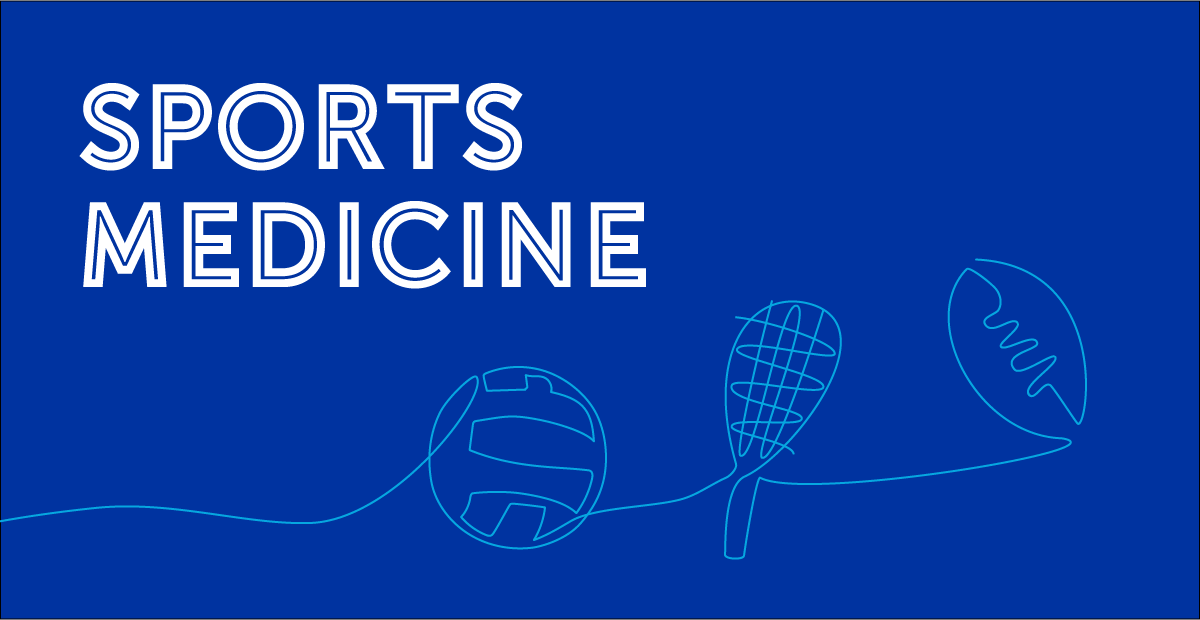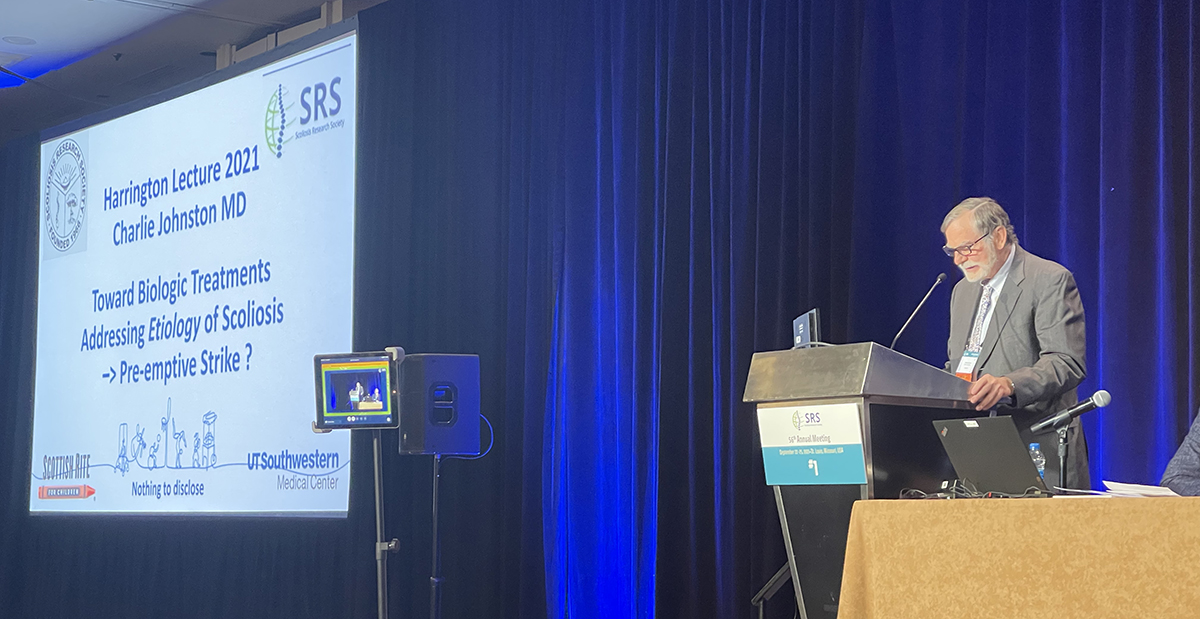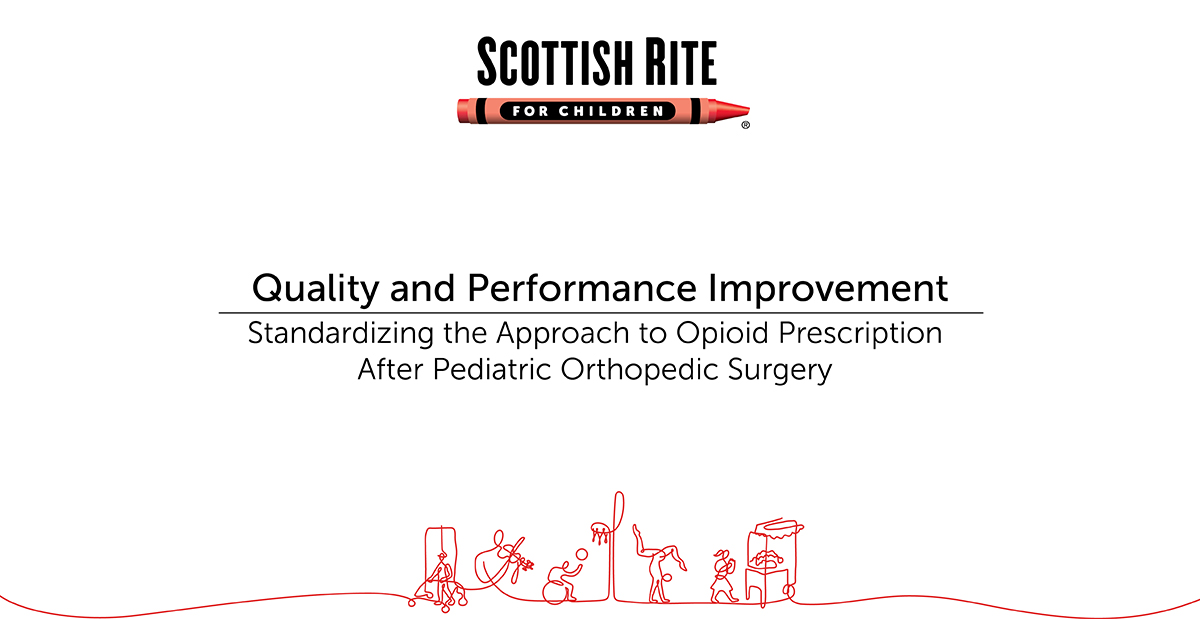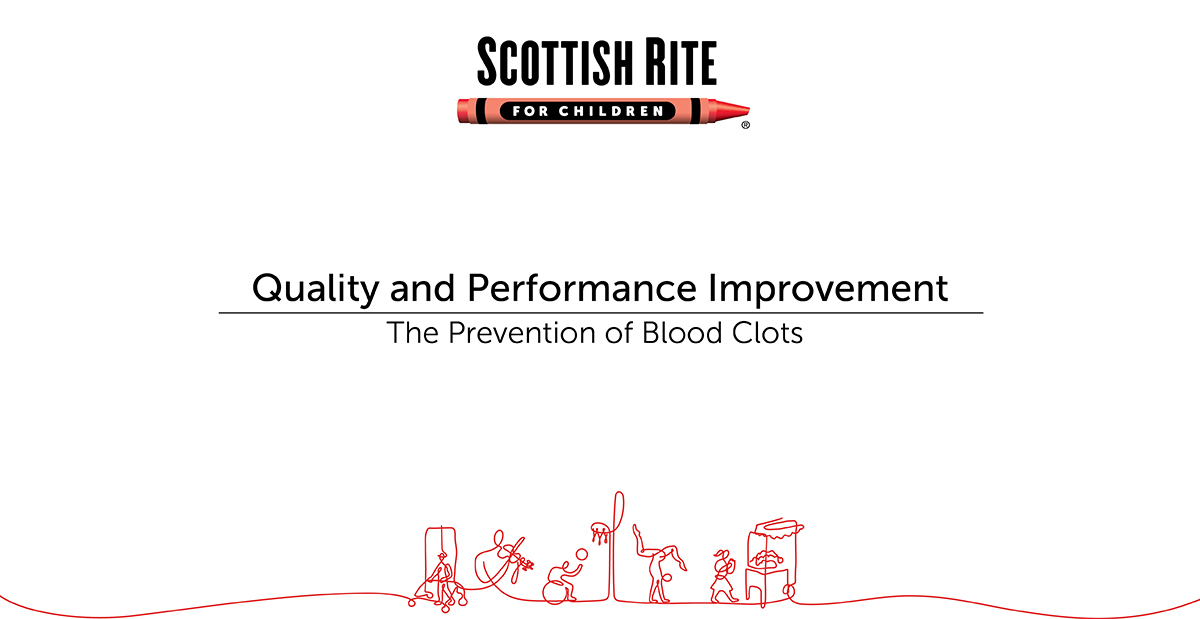
Apr 20, 2021 / General News
Project Seeks to Recognize All Patients at Risk of Rare Complication After Pediatric Orthopedic Surgery
Quality and safety initiatives are constantly in motion at Scottish Rite for Children. Chief Quality Officer Brandon A. Ramo, M.D., says, “With a century of clinical care focused on pediatric orthopedics to learn from, our quality and safety initiatives have direct impact on a large number of our patients. Through publications and our academic initiatives, we share our results with others across the globe.”
Our team has spent several years working on a quality improvement (QI) project to reduce the risk of venous thromboembolisms (VTE), more commonly referred to as blood clots, after pediatric orthopedic surgery. This is a known postoperative complication in adults and has not been well-studied in younger patients. Though the occurrence is rare, the consequences are significant, therefore, our team was committed to recognizing who is at risk before a procedure and managing the risk with evidence-based best practices.
In quality improvement projects, a common approach is “Plan-Do-Study-Act.” In this model, a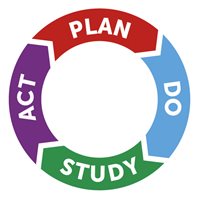 series of improvement cycles are completed to test multiple interventions based on available existing evidence. Data was collected to measure the impact of each cycle. A project can take several years.
series of improvement cycles are completed to test multiple interventions based on available existing evidence. Data was collected to measure the impact of each cycle. A project can take several years.
We asked two of the project leaders in the VTE Clinical Pathway project to answer a few questions about the process and results. Charu Sharma, M.H.A., M.S., CLSSBB, CPHQ, is the senior program manager of the Clinical Quality and Performance Improvement department. Pediatric orthopedic surgeon Henry B. Ellis, M.D., is the physician champion for this project.
What was the goal of the project?
Sharma – The main goal of the project is to reduce the incidence of VTE postoperatively in our pediatric patient population. We have achieved our goal through accomplishment of various milestones like implementing a preoperative risk screening tool, parent and family education about blood clots and developing an evidence-based pathway to help identify risk categories and interventions to manage VTE risk.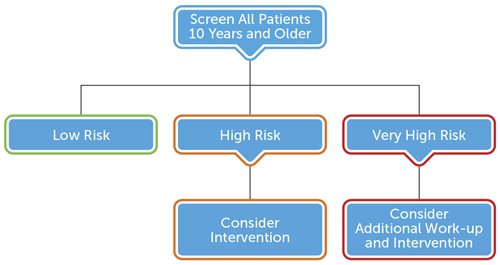
What have you learned?
Ellis – We have learned that we can successfully identify at-risk individuals with a methodical approach. The clear pathway has made implementation in our organization successful and we are grateful for all staff that have participated in the many iterations of the project.
What has made this project so impactful?
Sharma – As a project manager, I depend on other resources and people to achieve the project goals. These are just a few elements that have contributed to our success.
Ellis – This pathway has been shared with pediatric orthopedic providers in several ways. Most notably, the project was presented at a POSNA meeting in 2020. I am a member of two national groups that are focused on quality and safety for pediatric orthopedic care. These are the Pediatric Orthopaedic Society of North America (POSNA) committee for Quality and Safety and Value Initiatives and Sports Cohort Outcomes Registry (SCORE). We have shared these resources through these groups as well.
How is it going?
Sharma – Education and reference guides have been provided to medical staff and nursing staff to ensure we are implementing the pathway correctly. We monitor the occurrence of these blood clots and measure our compliance with pathway on a regular basis. Since January 2019, we have screened 100% of the surgery patients ages ten and older. Through March 2021, this includes 1838 patients. More than one third were identified in the high risk (523) or very high risk (104) categories. I am so proud to report that this reflects 423 days without a blood clot and we are continuing to monitor. It is promising and suggests we are correctly recognizing risk and providing the intervention for the right patients.
This VTE Clinical Pathway has provided a standardized and evidence-based approach for care across our institution. Deliberate planning and monitoring have resulted in better care as well as patient and family awareness of the risks of VTE based on personal or family history.
Ellis - Data-driven decisions in this pathway make screening and intervention meaningful. Processes like this result, not only leads to safer care, but also efficient care with reduced burden on the health care system by properly identifying and addressing risk.
Scottish Rite for Children has been recognized as a leader for safety and quality initiatives. Performance improvement is a vital part of the culture of the organization to provide the best care to our patients. Sharma, who leads many of these projects says, “This multidisciplinary team was so passionate and so engaged. Good things happen when good people are working together.”
If you are interested in resources created by this workgroup, please contact charu.sharma@tsrh.org.
Our team has spent several years working on a quality improvement (QI) project to reduce the risk of venous thromboembolisms (VTE), more commonly referred to as blood clots, after pediatric orthopedic surgery. This is a known postoperative complication in adults and has not been well-studied in younger patients. Though the occurrence is rare, the consequences are significant, therefore, our team was committed to recognizing who is at risk before a procedure and managing the risk with evidence-based best practices.
In quality improvement projects, a common approach is “Plan-Do-Study-Act.” In this model, a
 series of improvement cycles are completed to test multiple interventions based on available existing evidence. Data was collected to measure the impact of each cycle. A project can take several years.
series of improvement cycles are completed to test multiple interventions based on available existing evidence. Data was collected to measure the impact of each cycle. A project can take several years.We asked two of the project leaders in the VTE Clinical Pathway project to answer a few questions about the process and results. Charu Sharma, M.H.A., M.S., CLSSBB, CPHQ, is the senior program manager of the Clinical Quality and Performance Improvement department. Pediatric orthopedic surgeon Henry B. Ellis, M.D., is the physician champion for this project.
What was the goal of the project?
Sharma – The main goal of the project is to reduce the incidence of VTE postoperatively in our pediatric patient population. We have achieved our goal through accomplishment of various milestones like implementing a preoperative risk screening tool, parent and family education about blood clots and developing an evidence-based pathway to help identify risk categories and interventions to manage VTE risk.

What have you learned?
Ellis – We have learned that we can successfully identify at-risk individuals with a methodical approach. The clear pathway has made implementation in our organization successful and we are grateful for all staff that have participated in the many iterations of the project.
What has made this project so impactful?
Sharma – As a project manager, I depend on other resources and people to achieve the project goals. These are just a few elements that have contributed to our success.
- First, data plays a big role in any QI project. Data provides information that helps drive improvement efforts and track your progress over time. Collaborating with our electronic medical record (EMR) team has improved our ability to monitor this across the organization.
- Secondly, evidence-based pathways provide clear direction to staff and help them align their practice with clinical guidelines. Clinical pathways help with standardization of clinical care improving efficiency, patient outcomes and reducing cost. We have depended on evidence from the beginning, and when the answer hadn’t yet been published, we studied it.
- Third, having a multidisciplinary team in a project brings complimentary skills, expertise and experience from different clinical areas that serve our pediatric population. This helps with designing seamless workflows and address any concerns or barriers pro-actively to ensure excellent care experience for our patients and families.
- Finally, partnering with patients and families. Educating parents about VTE risk and promoting early mobility after surgery are standard of care for all patients now, these previously were offered when known risk factors were shared. The success of our education directly impacts our effectiveness since blood clots often occur in the first 48 hours after discharge.
Ellis – This pathway has been shared with pediatric orthopedic providers in several ways. Most notably, the project was presented at a POSNA meeting in 2020. I am a member of two national groups that are focused on quality and safety for pediatric orthopedic care. These are the Pediatric Orthopaedic Society of North America (POSNA) committee for Quality and Safety and Value Initiatives and Sports Cohort Outcomes Registry (SCORE). We have shared these resources through these groups as well.
How is it going?
Sharma – Education and reference guides have been provided to medical staff and nursing staff to ensure we are implementing the pathway correctly. We monitor the occurrence of these blood clots and measure our compliance with pathway on a regular basis. Since January 2019, we have screened 100% of the surgery patients ages ten and older. Through March 2021, this includes 1838 patients. More than one third were identified in the high risk (523) or very high risk (104) categories. I am so proud to report that this reflects 423 days without a blood clot and we are continuing to monitor. It is promising and suggests we are correctly recognizing risk and providing the intervention for the right patients.
This VTE Clinical Pathway has provided a standardized and evidence-based approach for care across our institution. Deliberate planning and monitoring have resulted in better care as well as patient and family awareness of the risks of VTE based on personal or family history.
Ellis - Data-driven decisions in this pathway make screening and intervention meaningful. Processes like this result, not only leads to safer care, but also efficient care with reduced burden on the health care system by properly identifying and addressing risk.
Scottish Rite for Children has been recognized as a leader for safety and quality initiatives. Performance improvement is a vital part of the culture of the organization to provide the best care to our patients. Sharma, who leads many of these projects says, “This multidisciplinary team was so passionate and so engaged. Good things happen when good people are working together.”
If you are interested in resources created by this workgroup, please contact charu.sharma@tsrh.org.
